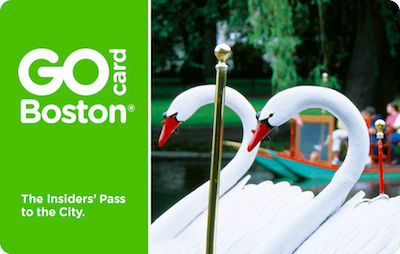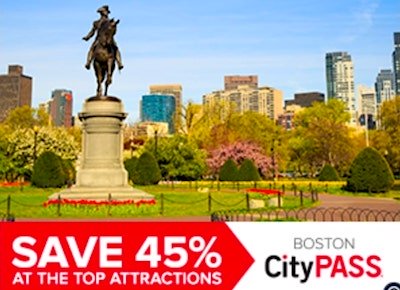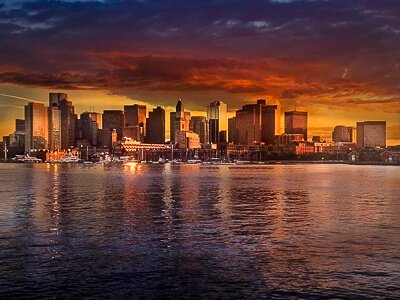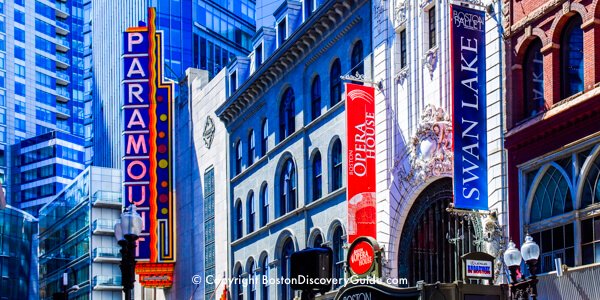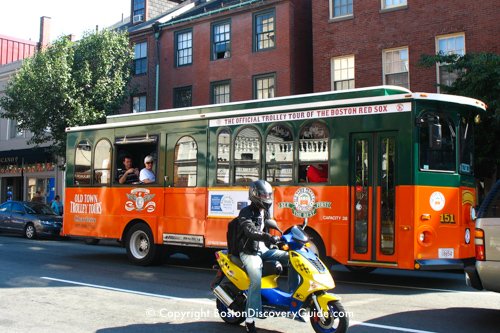Don't let rain dampen your Boston visit!
Our list of over 30 top things to do in Boston on rainy days will give you plenty of suggestions so that drizzles and downpours won't turn your visit to the city into a wash-out.
Even better, you'll get get to see and experience some wonderful places that you might otherwise miss.
Our Picks for Fun Ways to Spend a Rainy Day in Boston
- Secret Food Tour in Boston's North End - Discover Boston specialties
- Historic Pub Crawl along the Freedom Trail - Don't let the rain stop you from enjoying Boston's best brews
- Ghosts & Gravestones Trolley Tour - Perfect for a rainy night
Best of all, these rainy day activities in Boston are also fun things to do on sunny days . . . and even those other "s-word" weather days we try not to use . . . snow, sleet, and worst of all, slush.
Top Photo: Downtown Crossing near the Theatre District on a rainy Boston afternoon in November, (c) Boston Discovery Guide
Boston Discovery Guide is a reader-supported publication. When you buy through our links, we may earn a commission at no additional cost for you. Learn more
Indoor Sports & Culture for Rainy Days in Boston
Spend a Day in a Museum
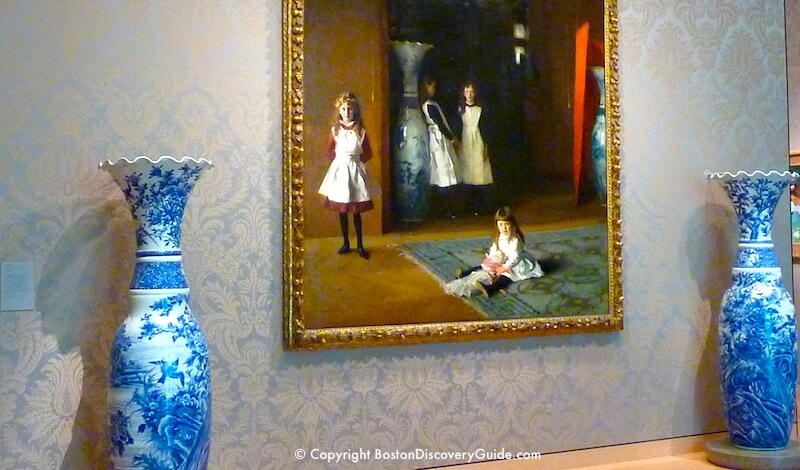
Spending a day in a museum is the time-honored way of avoiding bad weather while also soaking up some culture. It's a good strategy for rainy days, steamy days, snowy days, and even those days when you want to feel cocooned from the outside world.
With over 30 city museums to choose from, finding one to fit your interests shouldn't be a problem.
But if you're dealing with a day-long bone-chilling drizzle or soaking downpour, choose one of the bigger museums:
- Visiting with kids? Head to the Boston Children's Museum (best for ages up to about 10 or 11) or the New England Aquarium (avoid long lines by getting your tickets in advance).
- Teens and adults? In addition to the Aquarium, try the Museum of Fine Arts - be sure to visit the spectacular Arts of the Americas Wing and check out the mummies in the Egyption rooms.
Save on Entrance Fees
To save on admission fees if you're going to more than one museum, get a Boston discount card. You can choose from 2 types:
- Boston CityPASS - Gives you free admission to 4 attractions including the New England Aquarium, Museum of Science, and 2 other attractions. Good for 9 days.
- Go Boston Cards - Gives you free admission to New England Aquarium, Museum of Science, Museum of Fine Arts, and Boston Children's Museum, plus almost 40 other attractions. Available for 1, 2, 3, 5, or 7 days - you choose.
Explore the World of Science
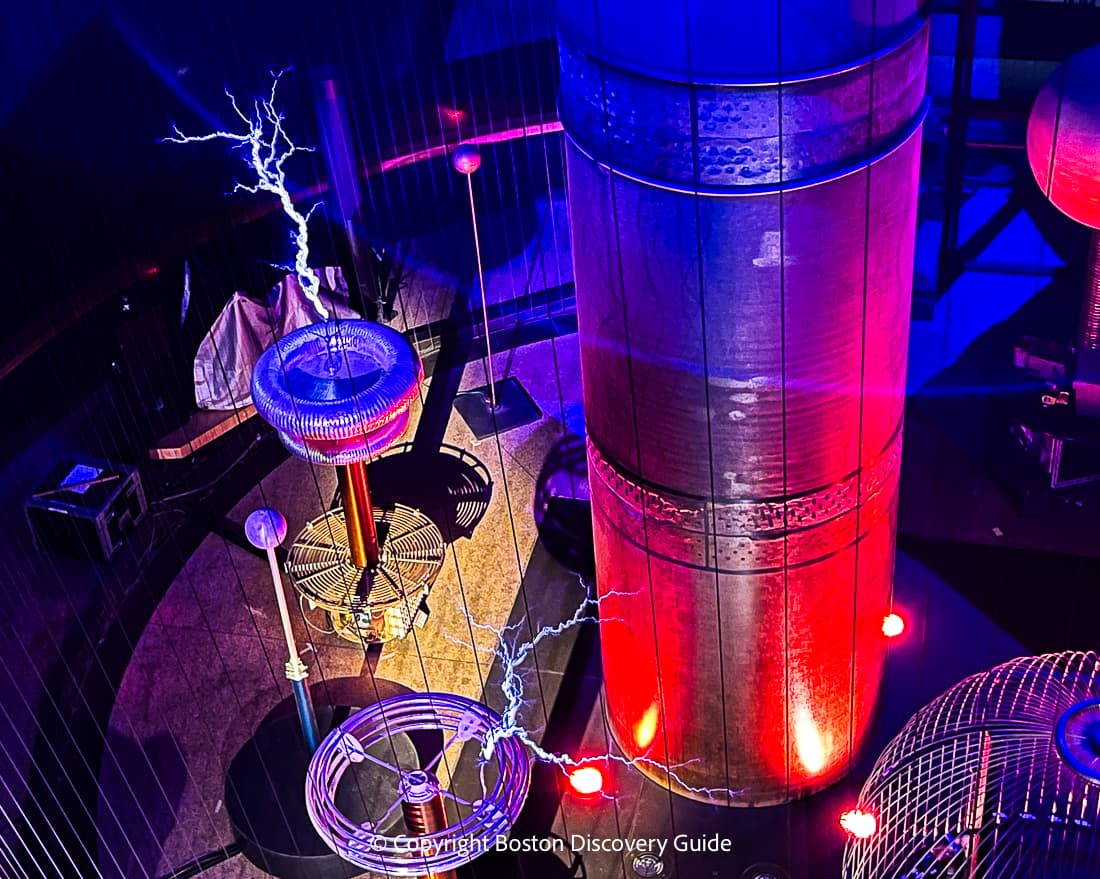
Special Exhibits
- The Art of Illusion - See how your brain interprets and misinterprets the world through this hands-on exhibit
- Perception Playground - Brand-new interactive exhibition that reveals the secrets of how illusions impact our perceptions
- Gaia Globe - View our planet on a grand scale
- Colossal Fossil: Triceratops Cliff - See the 65-million year-old fossil up close
- Exploring AI: Making the Invisible Visible: Discover how AI is already part of your life, and examine your choices about how and when you use it
With fascinating permanent exhibits for all ages, there's always something to see, do, and learn. Here are just a few of the most popular: Engineering Design Workshop - Triceratops Cliff, The Light House, Dinosaurs, Hall of Human Life, Animal Sculptures, Live Animal Care Center, a Rock Garden, Mathematica, New England Habitats, Garden Walk & Insect Zoo, Electricity.
Where: Boston's Museum of Science
When: Daily, 9am-5pm; open until 9pm on Fridays
Admission: $33 general museum admission ($28 for kids; children under 3 free; seniors 60+ $29). Reserve your tickets, or get free museum admission when you have a GoBoston Discount card or CityPASS card.
Watch a Game or Concert at TD Garden
TD Garden, home to the Boston Celtics and Boston Bruins, and frequent site of star-studded concerts, Disney on Ice, and other stellar events is next to North Station (Orange and Green T lines).
Check out the schedule:
Enter DISCOVERY10 to save 10% on TicketLiquidator & TicketNetwork tickets. Good for purchases made through 12/31/26.
See a Show in the Theater District
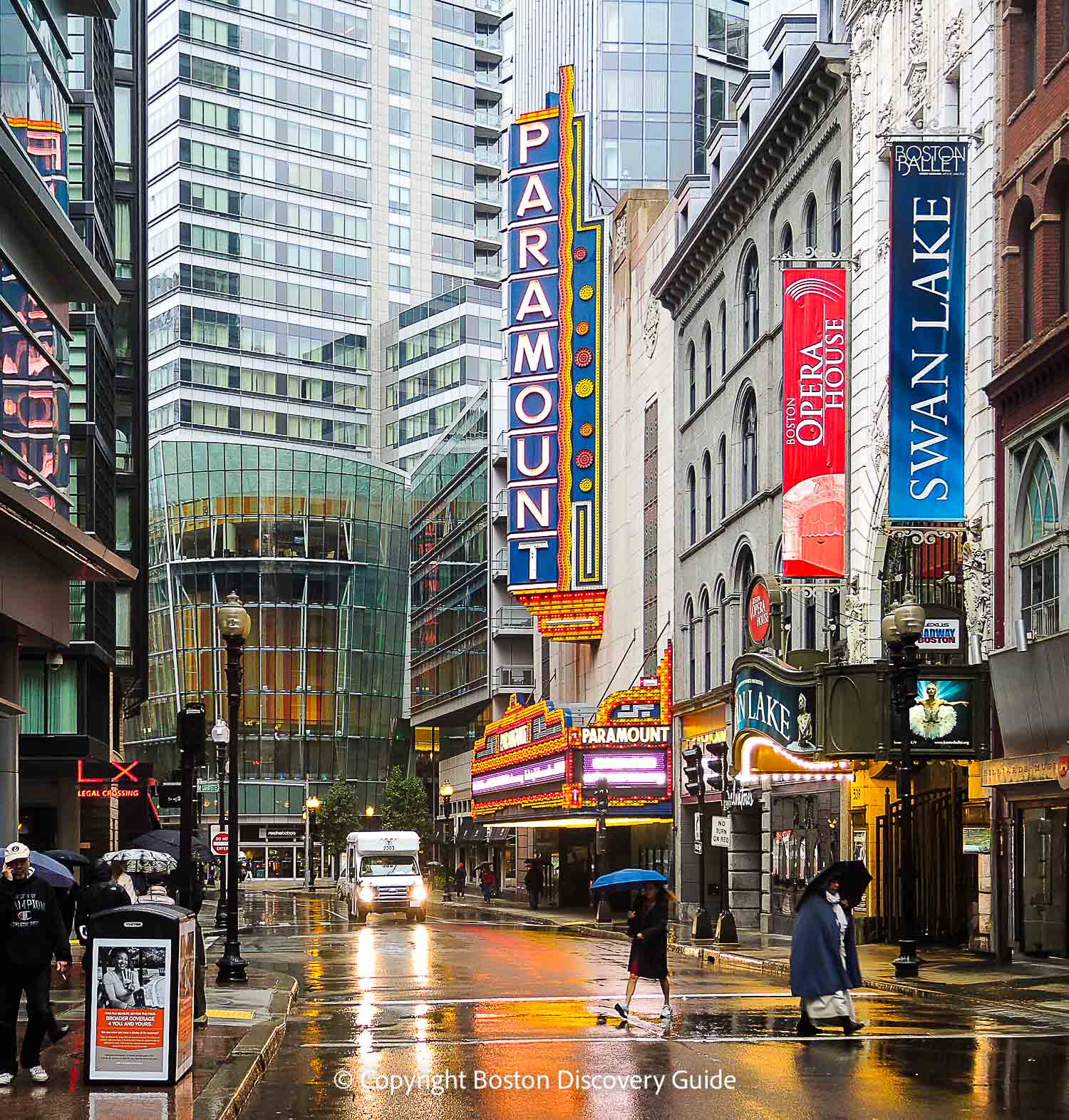
Boston theaters present everything from Broadway musicals to cutting edge drama. Going to a show is a favorite year-round Boston activity - you'll find a huge number of choices in the downtown Theatre District:
Find all theater shows and performances
Laugh at a Comedy Act
You'll forget all about the rain by catching a show at one of Boston's comedy clubs. Stand up, improv, ensembles...whatever your preference, you're sure to find interesting choices:
Find all comedy shows and performances
Immerse Yourself in Digital Art, Light, & Color
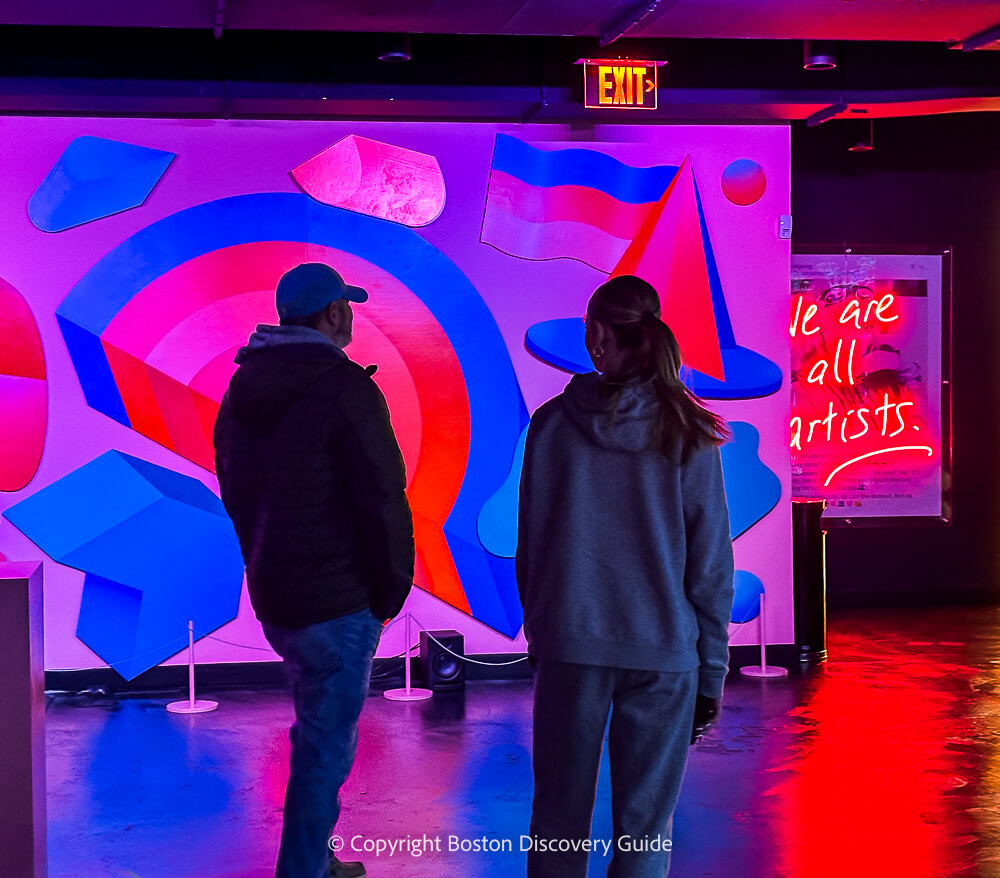
Escape the rainy weather outside by visiting WNDR, Boston's premier digital art experience where immersive, interactive exhibitions will brighten your day.
After you soak up all the colors and sensory experiences at WNDR, grab your umbrella and hop on a Boston trolley sightseeing tour to stay dry while seeing the city's top attractions.
Catch a Live Radio Broadcast at Boston Public Library
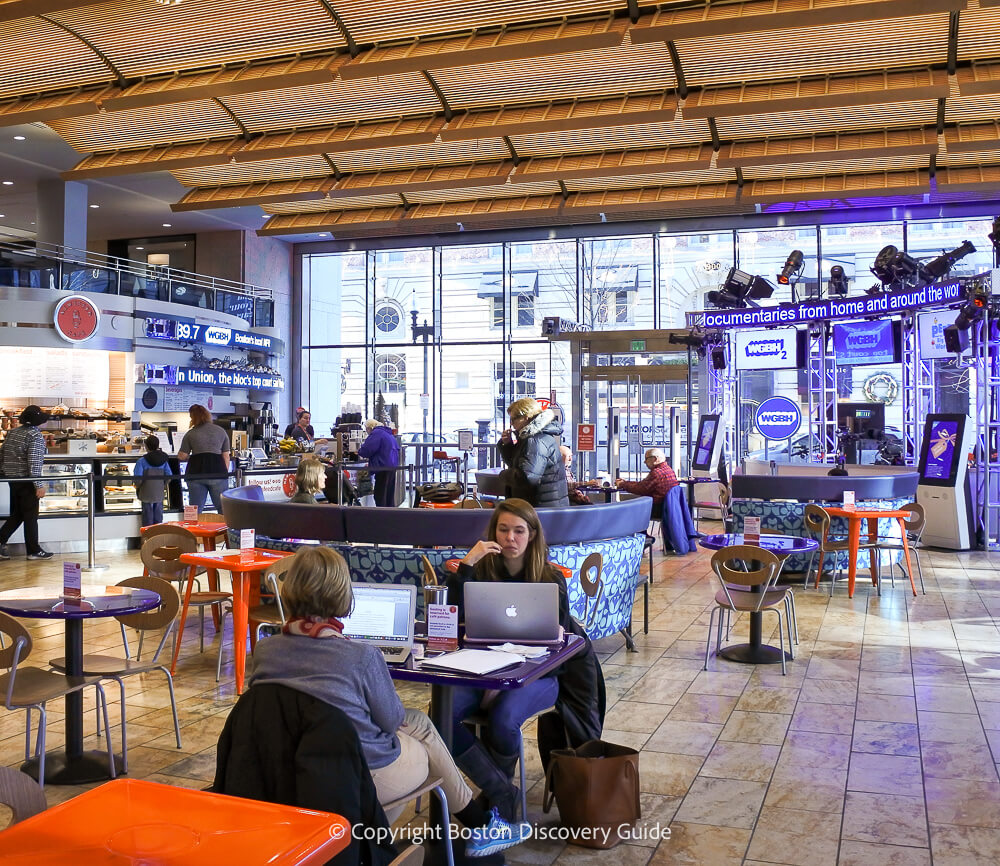
Head over to Boston Public Library (free admission!) in Copley Square on Tuesday or Friday, 11am-2pm, and watch a live Boston Public Radio broadcast in the BPL Studio (go in the Boylston Street entrance).
Then enjoy the library's museum-worthy art, dazzling architecture, cafes/coffee bars, and of course, all the books.
Go Bowling!
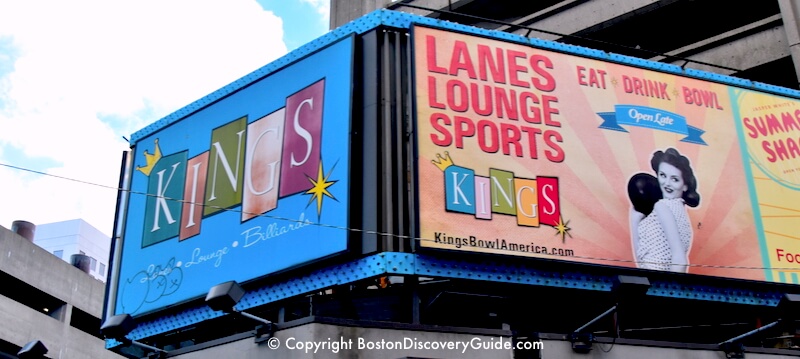
One of Boston's best kept secrets are our bowling alleys. Easiest to get to by T in the rain is Kings (50 Dalton St), close to Prudential Center in Back Bay (in fact, if you're staying near Pru Center, it's an easy walk, even in the rain).
Great for family fun before 6pm, and then strictly 21+.
Big screens, beverages for all ages, and food will add to your enjoyment.
Find out more on Kings' website
Watch a Movie
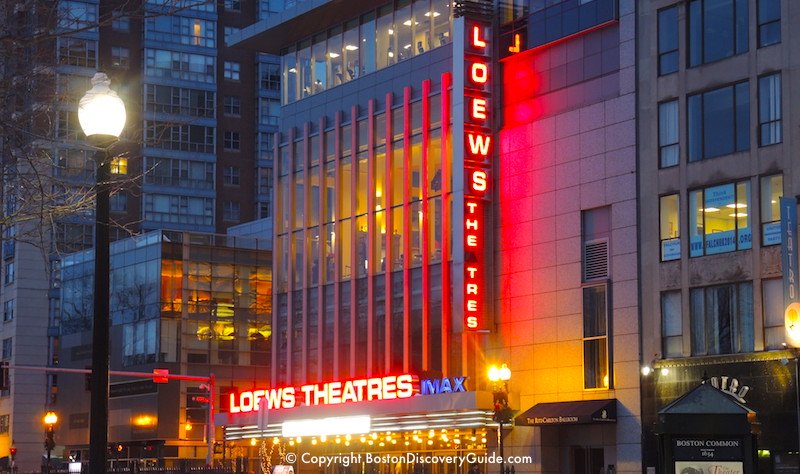
Even if you're normally addicted to Netflix when you're at home, going out to a movie on a rainy day can be a lot of fun, especially if you're visiting a different city.
For movie theaters showing first run commercial films, check Loew's Boston Common 19 (very close to the Park St T station). Thanks to the theater's 19 screens, you're likely to find something of interest.
But for indie films, foreign films, and repertory film series that defy description, see what's playing at the Brattle Theatre near the Harvard Square T station in Cambridge, and also grab a bite to eat.
Check out all of Boston's movie theaters
Chinatown is only a couple of blocks away - so grab an umbrella and head over to one of these fun Asian restaurants for a meal after your movie.
Another option: Jump on the T's Orange Line at Downtown Crossing toAssembly Station (about 5-6 minute ride), and enjoy plush seating and first-run movies at AMC Assembly Row.
Bonus: Shop for bargains in the Assembly Row outlet stores, and enjoy the trendy restaurants and bars in this upscale shopping complex.
Go for a Walk in the Rain
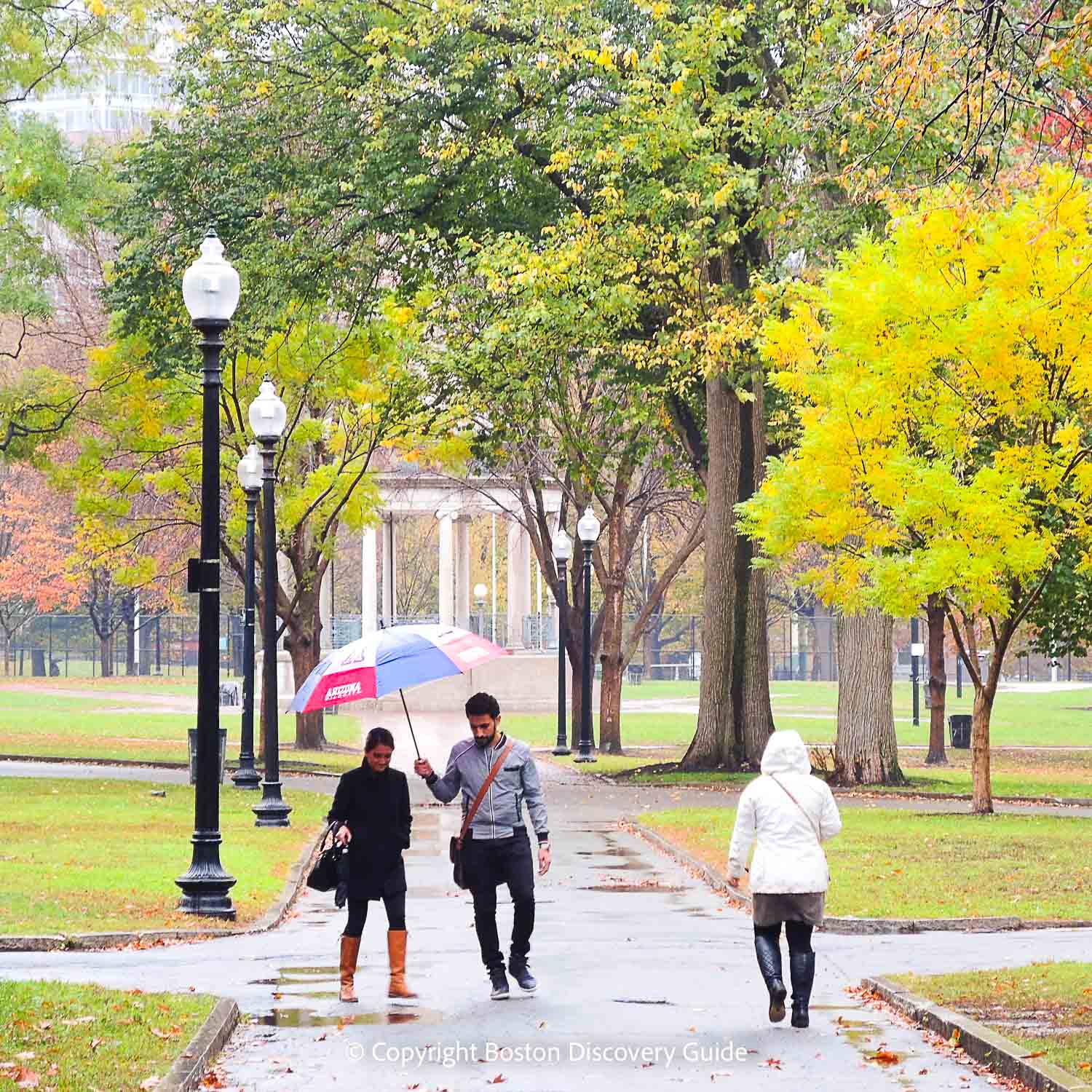
Going for a walk on a rainy day gives you the chance to see the city from a new perspective.
Favorite starting locations (choose the one you're closest to): the Rose Kennedy Greenway, the North End neighborhood, Charles Street in Beacon Hil, Newbury Street in Back Bay, Boston Common, the Public Garden, or any point along the Freedom Trail.
Follow in the Footsteps of Revolutionary War Heroes
On sunny days, you might want to walk along the Freedom Trail past various Revolutionary War sites.
But it's raining - so head to one of the historic Boston bars where the Sons of Liberty plotted their tea party and dreamed of revolution.
Or enjoy a leisurely meal in one of Boston's historic restaurants such as Union Oyster House, where generations of Bostonians have eaten basically the same traditional New England dishes that you'll be served.
Most of these places are very close to Faneuil Marketplace and several T stops - ask at your hotel which will be the most convenient from where you're staying. Or better yet, stay nearby:
Hotels near Faneuil Marketplace
Check out these top hotels near Faneuil Hall Marketplace
- Bostonian Boston (shown in photo, overlooks Faneuil Marketplace)
- Omni Parker House Hotel
- XV Beacon
- Ames Hotel
Boston Insider Tip: Where to Stay When Rain is Predicted for Boston
If you're coming to Boston in one of the cooler months and know ahead of time that rain is predicted during your stay, a fun option is to stay near Boston Common in the heart of the city near lots of attractions and restaurants - the hip and glamorous W Hotel, for example, is just 1 block away.
More top hotels near Boston Common:
Tour Boston Harbor (While Staying Dry)
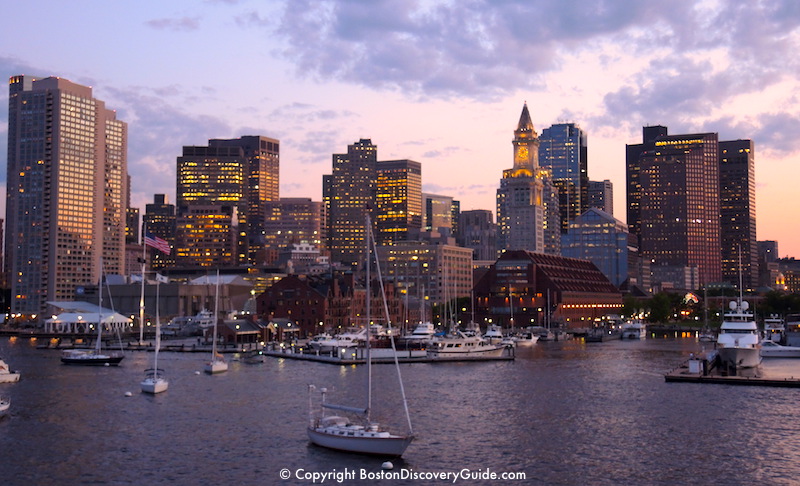
Touring the Harbor is a favorite visitor activity. . . and while most people think of doing this only when the weather is good, you can also see quite a bit in the rain.
Two of the biggest enclosed dinner cruise boats, the Spirit of Boston and the Odyssey, continue their tours year round, rain or shine. On cloudy nights, Boston's skyline looks even more dramatic.
Several cruises are also usually available with the Go Boston discount card.
Shop
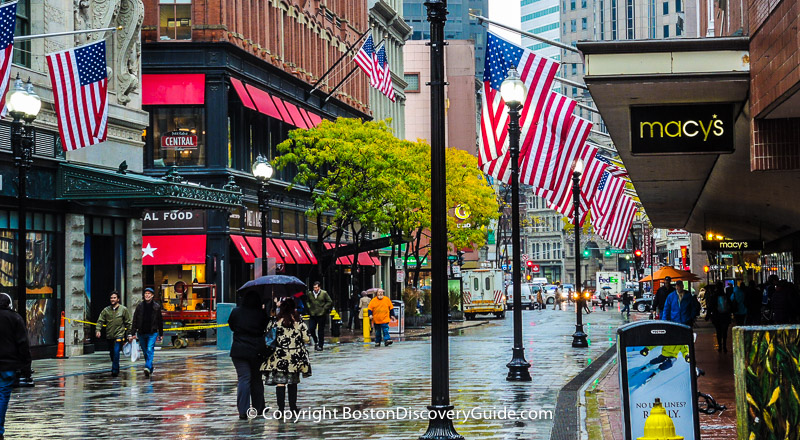
Shopping can be lots of fun on bad weather days.
If you're visiting from out of state or another country, remember: you don't have to pay sales tax in Massachusetts for clothing costing under $175. So you can save a lot of money by shopping for clothes here.
Centrally-located Downtown Crossing (Washington Street between School Street and Boylston/Essex Street) offers a huge Macy's, a variety of discounters such as TJ Maxx, DSW Shoes, and an Eddie Bauer Outlet, lots of boutiques, and plenty restaurants and coffee/wine bars. (Our rainy day self-paced walking tour includes this area.)
Three Boston shopping malls are easily reachable by T or on foot - Prudential Center, Copley Place, and Faneuil Hall Marketplace (aka Quincy Market).
For the ultimate experience in designer discount shopping, head to Wrentham Premium Outlets located about 30 miles south of Boston, where you'll find loads of deeply discounted designer brands.
Or consider Assembly Row factory stores - only 5 minutes from Downtown by T (subway). You'll find low prices every day (plus sometimes huge sales), and there are lots of fun restaurants and bars here. Kids will love Legoland, and your whole family will like the movie theater.
Check Out More Top Boston Events Each Month
January | February | March | April | May | June | July | August | September | October | November | December | Year at a Glance
More Articles about Things to Do in Boston
Need a Boston Hotel or Apartment?
Use this handy map from Booking.com to find the perfect place to stay. Just enter your dates to find what's available, see the best rates, and make your reservations.


